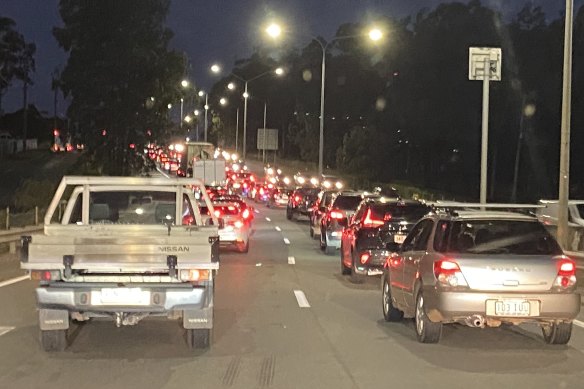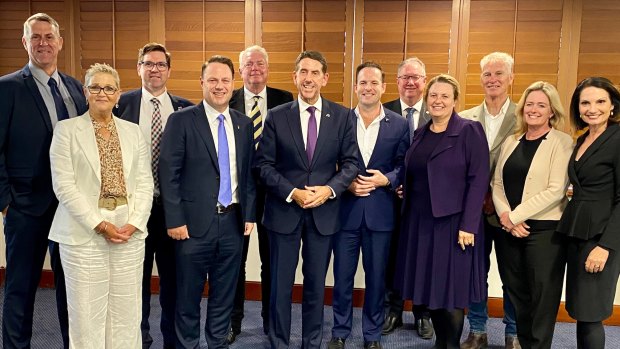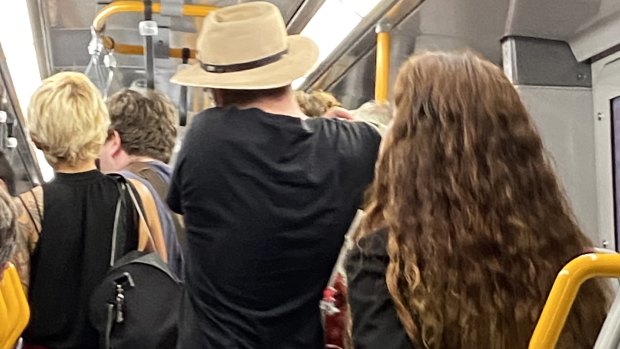This was published 5 months ago
Infrastructure funding pledge to help ease SEQ growing pains
By Tony Moore
The news
Last week, the mayors of four south-east Queensland councils facing population explosions levelled grave concerns about a lack of infrastructure funding at the state government.

Poor links between bus and rail services will put an extra 500,000 vehicles a day on roads around the Ipswich region unless changes are made urgently, Ipswich City Council says.Credit: Tony Moore
On Friday, Housing Minister Meaghan Scanlon gave an initial commitment of an extra $350 million to cover developers’ costs in preparing new blocks of land.
The Incentivising Infill Development Fund money, which pays for “trunk infrastructure”, such as roads, sewerage, parks, and bus stops, will cover developers’ council infrastructure charges or utility provider charges.
Why it matters
South-east Queensland needs a further 900,000 homes for an extra 2.2 million people by 2041, according to the August 2023 South East Queensland Regional Plan.
And Premier Steven Miles said more than 120,000 people moved to Queensland in the year to September 2023, despite an annual shortfall of 27,000 houses.

South-east mayors met with Treasurer Cameron Dick, Transport Minister Bart Mellish and members of the Opposition last week.
Last week, Moreton Bay Mayor Peter Flannery described how property developer AV Jennings pulled out of a 3000-lot development at Caboolture West because the infrastructure costs were too high.
What they said
After last week’s Council of Mayors (SEQ) meeting with Treasurer Cameron Dick, Transport Minister Bart Mellish and Opposition Leader David Crisafulli, its treasurer, Lockyer Valley Mayor Tanya Milligan, said she believed the June 11 state budget would contain more measures to help councils cope with population growth.
“We’ve held positive discussions with both sides of the aisle about opportunities to empower, enable, and back councils grappling with record growth,” she said.
Ipswich Mayor Teresa Harding – whose region has the fastest growth rate (126 per cent) in south-east Queensland – asked for an additional $5 million annually for new buses into the Ripley Valley, and to finally connect Ipswich and Springfield by bus.
“I had the opportunity to raise our critical shortfall in infrastructure investment with the transport minister, as well as the director-general of transport and main roads, and hope to see some much-
needed funding form part of next month’s state budget,” Harding said.
“The shortfall in transport investment in our city is real. Despite having the sixth-largest population in Queensland – and the fastest growth rate – Ipswich sits in 19th place out of all Queensland councils in terms of overall transport investment from the state.”

Trains to Springfield Central are becoming more crowded as commuter numbers increase.Credit: Tony Moore
Mellish said improvements were made to the Ipswich bus network around Springfield in 2019 and 2020, but not last year.
“In 2023, Translink launched more than 2000 new weekly bus services on the Gold Coast, Townsville, Sunshine Coast and Redlands to support our customers from a $9 million annual investment through the Bus Services Growth Program,” Mellish said.
But in 2020, he said, a new Spring Mountain leg was added to the existing Springfield route, while in 2019, a bus route between Ripley Valley, Springfield Station, Orion Shopping Centre and Yamanto was added.
Mellish said he understood Harding’s public transport and road concerns, as well as those of other mayors.
“I had a positive discussion with the south-east Queensland mayors on Thursday, and will continue to work closely with them on the best solutions for these issues.”
Another perspective
Rail Back on Track’s Robert Dow said buses needed to be prioritised because new rail lines took a decade to plan, design, fund and build.
“We know that growth areas like Maroochydore, Coolangatta, Ripley, Redbank, Flagstone, Yarrabilba, Hamilton and Redlands can’t just have nothing until rail eventually reaches them,” Dow said.
“What is needed is a broader rollout of high-frequency bus routes – operating at least every 15 minutes, seven days a week – outside traditional inner-city areas on major arterial roads.”